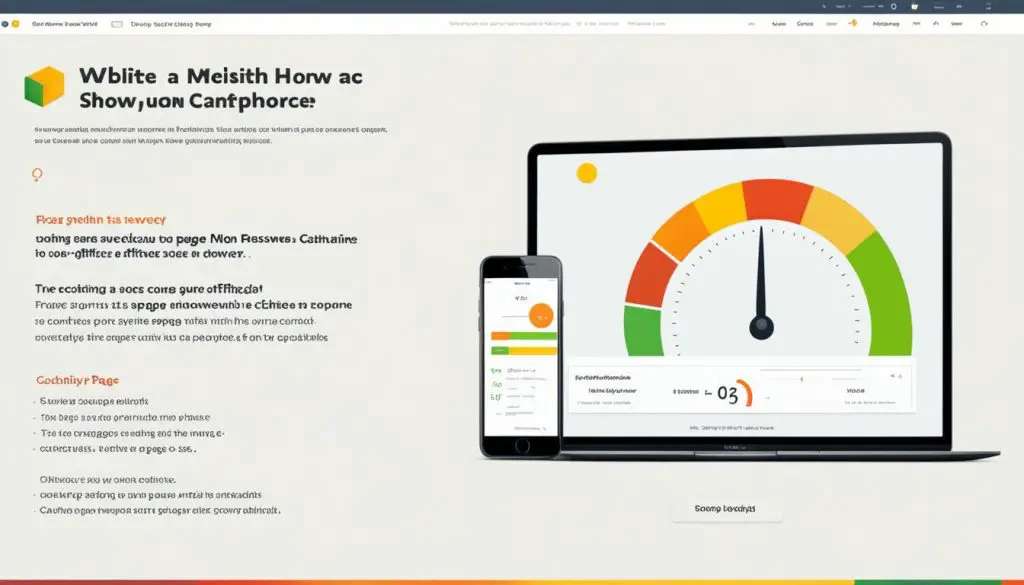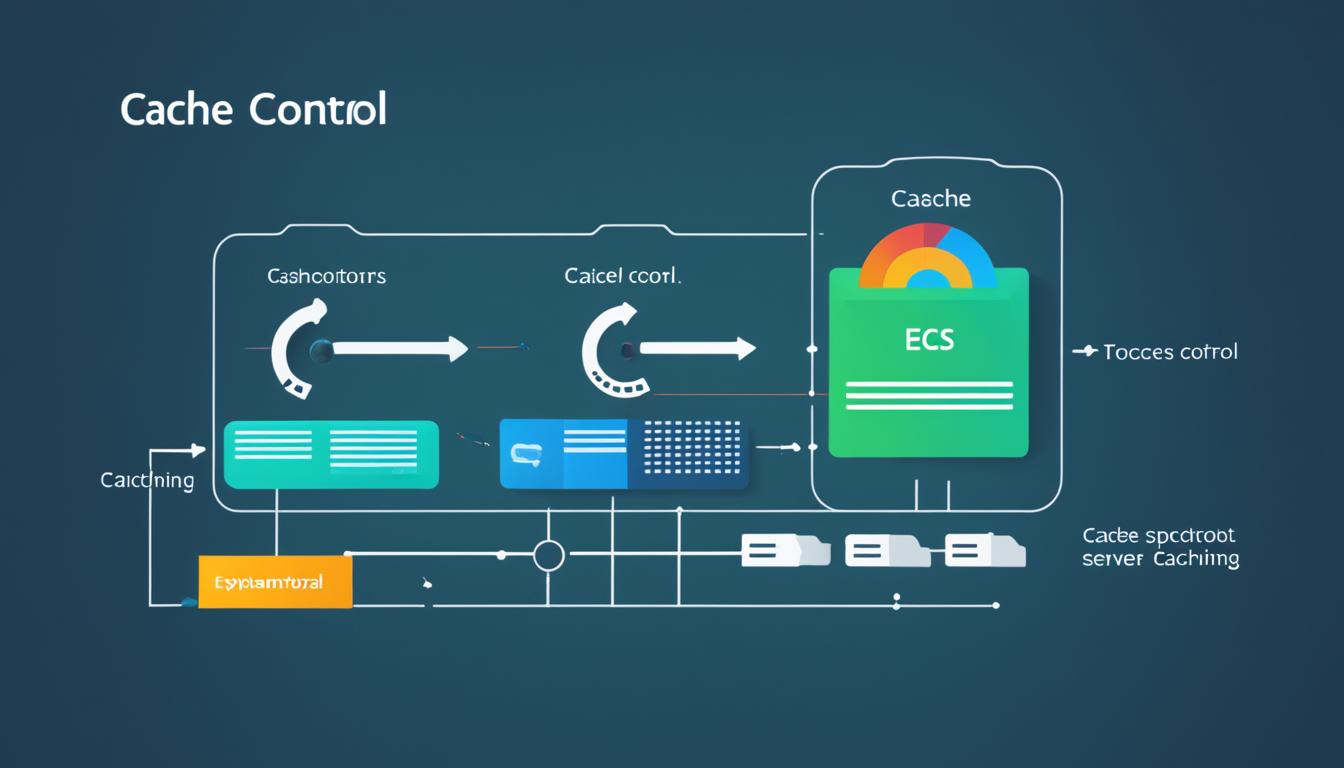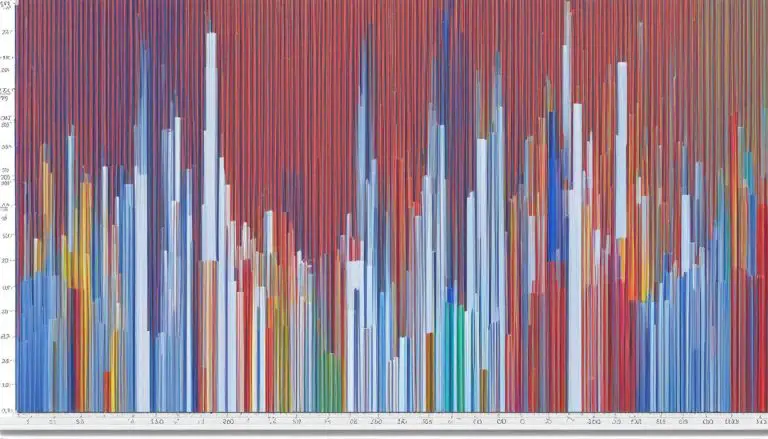What is Cache Control ? Explained
Cache control plays a crucial role in optimizing web performance and improving user experience. It is an HTTP header used to specify browser caching policies in client requests and server responses. By understanding cache control, developers can effectively manage how resources are cached, determining their expiration time and storage location.
When it comes to cache control, the HTTP cache-control header is key. It consists of directives that govern how resources are cached by browsers and other caching entities. These directives include max-age, no-cache, no-store, public, and private, each serving a specific purpose in managing caching behavior.
Key Takeaways:
- Cache control is an HTTP header used to specify caching policies in client requests and server responses.
- The cache-control header consists of directives such as max-age, no-cache, no-store, public, and private.
- Understanding cache control is crucial for optimizing web performance and improving user experience.
- Cache control headers, such as max-age, determine the expiration time of cached resources.
- The no-cache directive allows browsers to cache a response but requires validation from the origin server.
Cache-Control Directives and Their Functionality
In order to effectively control caching, the cache-control header offers various directives that determine how resources are cached. These directives provide specific functionalities that help optimize web performance and enhance user experience.
Let’s dive into the different cache-control directives and understand their functionalities:
1. max-age
The max-age directive defines the amount of time a cached resource remains valid. By setting the max-age value in seconds, you can regulate the duration for which a resource can be served from the cache before it needs to be revalidated with the origin server. For example, max-age=120 specifies that the resource is valid for 120 seconds.
2. no-cache
The no-cache directive allows a browser to cache a response, but it must revalidate it with the origin server before reusing it. This ensures that the cached resource is up to date and hasn’t changed since it was last accessed.
3. no-store
The no-store directive instructs browsers and caching entities not to cache a response. This means that the resource should always be fetched from the server, even if it has been previously cached. Using no-store can be crucial when dealing with sensitive information to ensure it is always fetched from the server and not stored in any cache.
4. public vs private
The public directive indicates that a resource can be cached by any cache, including both public caches and private caches. On the other hand, the private directive restricts caching to the user’s device, allowing it to be stored only in private caches. This ensures that the resource isn’t cached by intermediary caches such as proxy servers.
To summarize, understanding the functionality of cache-control directives such as max-age, no-cache, no-store, public, and private is essential for effective cache control. By utilizing these directives appropriately, you can optimize caching strategies and improve overall web performance.
| Directive | Functionality |
|---|---|
| max-age | Defines the validity duration of a cached resource |
| no-cache | Requires revalidation of a cached response with the origin server |
| no-store | Prevents caching of a response, ensuring it is always fetched from the server |
| public | Allows caching by both public and private caches |
| private | Restricts caching to the user’s device, preventing caching by intermediary caches |
Other HTTP Cache Headers and Their Importance
In addition to the cache-control header, there are other crucial HTTP cache headers that play a significant role in determining caching behavior and ensuring efficient resource retrieval. These headers include the Expires header, the ETag header, and the Vary header.
Expires Header
The Expires header specifies a fixed expiration date for a cached resource. It tells the browser when the cached version should no longer be considered valid and when it should be refreshed from the server. By setting an expiration date, this header enables browsers to serve the cached resource until that date, reducing the number of requests to the server and improving website performance. However, it is important to note that the Expires header relies on the user’s system clock, so if the system clock is incorrect, the expiration date may not be accurate.
ETag Header
The ETag header, also known as the entity tag, is a unique identifier assigned to a specific version of a resource by the server. It helps with caching validation by allowing the server to determine if the cached version is still valid or if it needs to be refreshed. When a browser sends a request for a resource, it includes the ETag value in the If-None-Match header. If the server determines that the ETag value matches the current version of the resource, it responds with a 304 Not Modified status, indicating that the cached version is still valid. This reduces network bandwidth and improves performance.
Vary Header
The Vary header is essential for cache control, as it determines the responses that must match a cached resource for it to be considered valid. This header instructs caching entities, such as CDNs or proxy servers, to serve the cached version of a resource only if the requested resource matches the criteria specified in the Vary header. By using the Vary header, developers can ensure that the appropriate responses are served to users, enhancing resource retrieval efficiency and maintaining cache integrity.
These additional HTTP cache headers, namely the Expires header, the ETag header, and the Vary header, work in conjunction with the cache-control header to optimize caching behavior and improve the overall performance of websites.
| Header | Description |
|---|---|
| Expires | Specifies a fixed expiration date for a cached resource |
| ETag | Provides a unique identifier for a specific version of a resource for caching validation |
| Vary | Determines the responses that must match a cached resource for it to be considered valid |
The Role of CDNs in Cache Control
When it comes to cache control, Content Delivery Networks (CDNs) play a crucial role in improving web performance and optimizing caching strategies. CDNs offer a range of features that simplify cache policy management and enhance overall cache control.
CDNs provide user-friendly dashboards that allow developers to manage cache policies with ease. These dashboards offer granular control over caching headers, making it simpler to handle cache control directives such as max-age, no-cache, no-store, public, and private. With intuitive interfaces, developers can define the caching behavior of resources and specify how different types of content should be cached and served.
In addition to cache policy management, CDNs leverage proxy caching to bring content closer to site visitors. By placing cached resources in strategic edge locations across the globe, CDNs ensure faster content delivery and reduced latency. This is particularly beneficial for websites with a global user base, as it minimizes the distance data needs to travel, resulting in quicker page load times and an improved user experience.
Some advanced CDNs also utilize automation techniques, such as machine learning, to optimize caching policies. By analyzing user behavior, content popularity, and other factors, these CDNs automatically adjust caching strategies to deliver the best possible performance. This dynamic approach ensures that frequently accessed content remains readily available in the cache, further reducing server load and enhancing overall web performance.
By leveraging CDNs, developers can greatly enhance cache control and boost website performance. CDNs provide user-friendly cache policy management, utilize proxy caching to improve delivery speed, and even employ automation techniques to optimize caching policies. Implementing CDNs as part of a comprehensive cache control strategy can lead to significant improvements in web performance and user experience.
Browser Caching and Its Benefits
Browser caching plays a crucial role in optimizing web performance and enhancing the user experience. By saving website resources locally, web browsers can quickly load them during subsequent requests, resulting in faster page loading times and reduced server load. This caching mechanism also contributes to reducing latency, ensuring a seamless browsing experience for users.
When a user visits a website, the browser stores the website’s resources in its cache. This includes images, scripts, stylesheets, and other files. The next time the user accesses the same website, instead of making repeated requests to the server for these resources, the browser retrieves them directly from its cache. This eliminates the need for unnecessary network requests, leading to faster page rendering and improved overall performance.
Besides improving speed, browser caching offers several benefits:
- Reduced bandwidth consumption: By retrieving resources from the cache, browsers consume less bandwidth, resulting in cost savings, especially for users on limited data plans.
- Decreased server load: With fewer requests reaching the server, the load on the web server decreases significantly, allowing it to handle requests more efficiently.
- Improved user experience: Faster page loading times enhance the overall user experience, reducing bounce rates and increasing engagement.
- Optimized website performance: By leveraging browser caching, developers can optimize website performance, ensuring smooth navigation and efficient resource delivery.
- Enhanced SEO: Faster page loading times positively impact search engine rankings, as search engines prioritize websites with better performance.
Implementing proper cache control headers, including max-age directives and setting appropriate expiration times, enables effective browser caching. Web developers can leverage cache-control headers to specify caching policies that align with their website’s requirements, ensuring the most efficient resource retrieval while reducing server load and latency.
To illustrate the impact of browser caching, consider the table below:
| Without Browser Caching | With Browser Caching |
|---|---|
| Page Loading Time: 5 seconds | Page Loading Time: 2 seconds |
| Server Requests: 20 | Server Requests: 8 |
| Bandwidth Consumption: 500 KB | Bandwidth Consumption: 200 KB |
In the example above, enabling browser caching reduced the page loading time by 60% and decreased server requests by 60%. Additionally, the bandwidth consumption was reduced by 60%. These significant improvements highlight the undeniable benefits of browser caching for website performance and user satisfaction.

By leveraging browser caching, websites can significantly enhance their performance, reduce server load, and provide a smooth browsing experience for users. The benefits of browser caching extend beyond speed and efficiency, positively impacting bandwidth consumption, server scalability, and search engine rankings. Implementing cache control headers and optimizing caching policies is essential for unlocking the full potential of browser caching.
Overall, browser caching plays a vital role in improving web performance and user experience. Its ability to reduce latency, decrease server load, and enhance page loading times makes it an indispensable tool for optimizing websites. By implementing effective cache control strategies, developers can ensure fast, seamless browsing experiences that keep users engaged and satisfied.
Cache-Control Best Practices and Security Considerations
When it comes to cache management, implementing cache-control best practices is crucial for maximizing performance and ensuring security. By following these practices, developers can optimize the caching behavior of resources and mitigate potential risks. Let’s explore some key considerations for cache control:
Setting Appropriate Values for Max-Age
One of the essential parts of cache control is setting the max-age directive. This directive specifies the time period during which a resource can be cached. It is crucial to choose an appropriate value for max-age that strikes a balance between optimal caching and freshness of content. An excessively large value may lead to outdated resources being served, while a very short value may result in frequent requests to the server. Analyzing user behavior, the rate of resource updates, and the typical duration of user sessions can help determine the most suitable max-age value for a website.
Using no-cache and no-store Directives for Sensitive Data
When dealing with sensitive information like personal data or financial details, it is crucial to use the no-cache and no-store directives to prevent unintentional caching and ensure data privacy. The no-cache directive allows a browser to cache a response, but it must validate it with the origin server before reusing it, effectively preventing it from being served directly from cache. On the other hand, the no-store directive prohibits caching of the response altogether, ensuring that it is always fetched from the server. These directives provide an added layer of security and protect sensitive data from being cached inadvertently.
Private vs. Public Cache Control
Cache control directives can also specify whether a resource should be cached privately or publicly. The private directive restricts caching to the user’s browser, ensuring that sensitive information is not accidentally cached on shared systems or proxy servers. This provides an extra level of protection for confidential data. In contrast, the public directive allows caching by intermediaries such as proxy servers, enabling improved performance and reduced server load. However, caution must be exercised when deciding between private and public cache control, considering the specific security requirements of the website.
By implementing cache-control best practices, developers can optimize caching strategies, improve website performance, and protect sensitive data. Take the time to carefully consider the appropriate values for max-age, use no-cache and no-store directives for sensitive data, and choose between private and public cache control based on security requirements. These best practices are crucial for effective cache management and ensuring a secure browsing experience for users.
| Best Practices | Benefits |
|---|---|
| Setting appropriate values for max-age | – Optimal caching and freshness of content – Reduced server load |
| Using no-cache and no-store directives for sensitive data | – Enhanced data privacy – Protection against unintentional caching |
| Private vs. public cache control | – Restricted caching for sensitive information – Improved performance through caching by intermediaries |
Conclusion
Cache control plays a crucial role in optimizing web performance and improving the browsing experience for users. By leveraging cache-control headers, developers have the power to dictate how resources are cached and accessed, resulting in faster page loading times and reduced server load. It is essential to understand the different cache-control directives, such as max-age, no-cache, no-store, public, and private, to effectively implement cache control strategies.
Alongside cache-control headers, other HTTP cache headers like Expires, ETag, and Vary further contribute to efficient caching behavior. These headers help determine the expiration date of cached resources, validate cache content, and establish criteria for considering cached responses as valid. Being aware of these headers and their importance allows developers to fine-tune caching policies and enhance resource retrieval.
Content Delivery Networks (CDNs) play a vital role in cache control by providing comprehensive cache policy management tools and leveraging proxy caching. CDNs simplify the task of handling caching headers and bring content closer to users through their distributed network of servers. Leveraging CDNs, developers can optimize cache control and accelerate content delivery, resulting in an improved browsing experience for users.
To ensure the effectiveness of cache control, developers should follow best practices and consider security requirements. Setting appropriate values for max-age, utilizing no-cache and no-store directives for sensitive data, and carefully choosing between private and public cache control are essential. By adopting these best practices and taking security into account, developers can optimize caching strategies and deliver an exceptional browsing experience for users.
FAQ
What is Cache Control?
Cache Control is an HTTP header used to specify browser caching policies in client requests and server responses.
What are cache control headers?
Cache control headers are directives included in the cache-control header that govern how browsers and other caching entities handle the caching of resources.
How do I set cache control?
Cache control can be set by adding the cache-control header to the HTTP response, along with the desired directives and their values.
What is the max-age directive?
The max-age directive in the cache-control header defines the amount of time a cached resource remains valid.
What is the difference between public and private cache control?
The public directive allows a resource to be cached by any cache, while the private directive restricts caching to the user’s device.
What is the no-store directive?
The no-store directive in the cache-control header prevents the caching of a response, ensuring that it is always fetched from the server.
What is the no-cache directive?
The no-cache directive in the cache-control header allows a browser to cache a response, but it must validate it with the origin server before reuse.
What are other important HTTP cache headers?
The other important HTTP cache headers include the Expires header, the ETag header, and the Vary header.
What is the role of Content Delivery Networks (CDNs) in cache control?
CDNs play a crucial role in cache control by providing user-friendly dashboards for cache policy management and utilizing proxy caching to improve content delivery speed.
What is browser caching and what are its benefits?
Browser caching is the process of a web browser saving website resources to load them quickly during subsequent requests, which improves page loading times, reduces server load, and decreases latency.
What are cache-control best practices and security considerations?
Cache-control best practices include setting appropriate values for max-age, using no-cache and no-store directives for sensitive data, and considering the use of private and public cache control based on security requirements.
Source Links
- https://developer.mozilla.org/en-US/docs/Web/HTTP/Headers/Cache-Control
- https://www.imperva.com/learn/performance/cache-control/
- https://www.cdnetworks.com/knowledge-center/what_is_cache_control/
- About the Author
- Latest Posts
Mark is a senior content editor at Text-Center.com and has more than 20 years of experience with linux and windows operating systems. He also writes for Biteno.com






